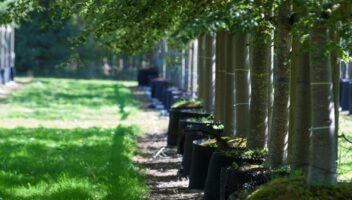Autumn is the best time to plant fruit trees, as they have all winter to settle into their new home before the growth of spring. Trees planted in autumn will need less watering the following summer and will establish a healthy root system more quickly.
The beauty of fruit is how little you need to do with it to get the best of its flavour; there is little sweeter than a fruit freshly picked from the tree. The range to choose from is mouth-watering: sweet eating apples, delicious cooking apples, tasty pears, succulent plums, yummy cherries as well as more unusual types of fruit such as gages, damsons, peaches and quinces. Fruit trees also bring the extra benefit of beautiful spring blossom to the garden too.
In this guide to some of the best fruit trees to plant this autumn, we will look at some of the favourite varieties to try in your own garden (find them at your nearest Hillier Garden Centre) and how to plant and care for them to get the best from your fruit.
Fruit Trees and Rootstock
First, when choosing your fruit tree, it is important to know that all fruit trees will be grafted onto a rootstock. A rootstock is just another compatible tree that has been bred to have special characteristics. Most importantly, the rootstock your fruit tree is grafted onto influences the size of the tree.
If you only want small fruit trees in the garden this autumn that won’t get taller than two or three metres, then choose a dwarf rootstock. For a more traditional orchard type tree there are more vigorous rootstocks. In general, fruit trees on dwarf rootstocks will produce a crop at an earlier age, but the trees don’t tend to live as long. The ultimate yield on a larger tree will obviously be much bigger. The rootstock name should be clearly indicated on the tree and varies by fruit; for example with apple trees an M27 is an extreme dwarf rootstock and will mean your tree will grow to less than 1.5 metres in height. M26 rootstock for an apple tree is only semi-dwarf and the tree is likely to grow to 3 metres in height.
Fruit trees available in garden centres are usually about two years old, so they can begin producing a good crop within a few years.
Recommended Varieties
There is a wide range of fruit trees available to tempt you in your garden. Below are six favourites.
Apple ‘Christmas Pippin’
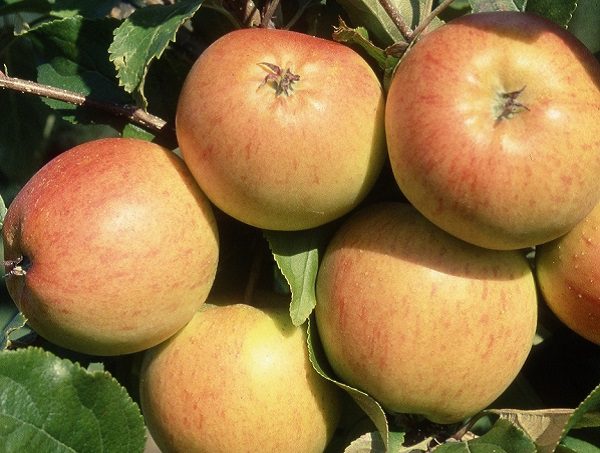
A crisp and tasty late eating apple with a beautiful honey flavour. The apples ripen in October and will keep until Christmas. It flowers and crops heavily and is very easy to grow.
Apple ‘Scrumptious’

This apple variety produces bright red fruit with an aromatic, sweet flavour. It is thin-skinned and ideal for children. It ripens in early September and is self-fertile.
Cherry ‘Stella’
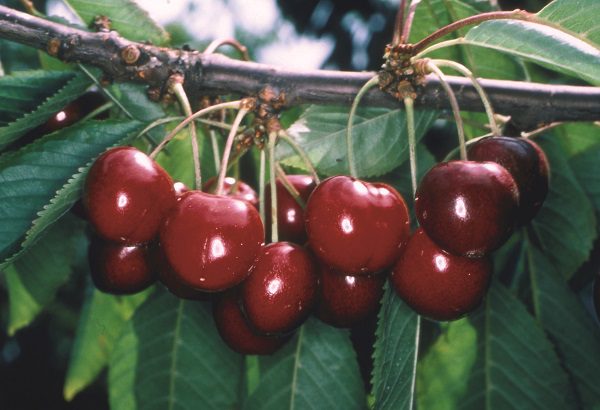
Cherry ‘Stella’ is a large, dark-red sweet cherry. It crops reliably in late July and is self-fertile.
Pear ‘Concorde’
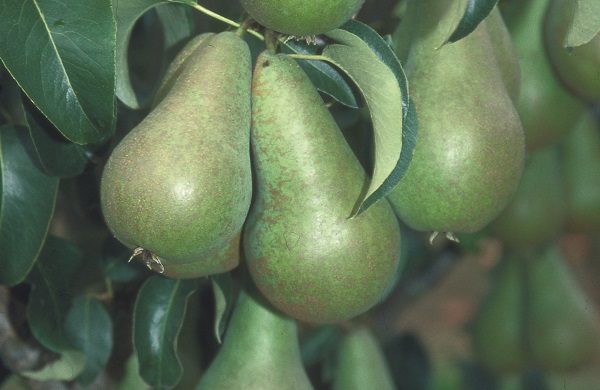
This pear variety has sweet flesh and is very juicy, with the fruit growing on a compact tree. The skin of the pears is green and yellow with russet patches and it is heavy cropping.
Plum ‘Jubilee’
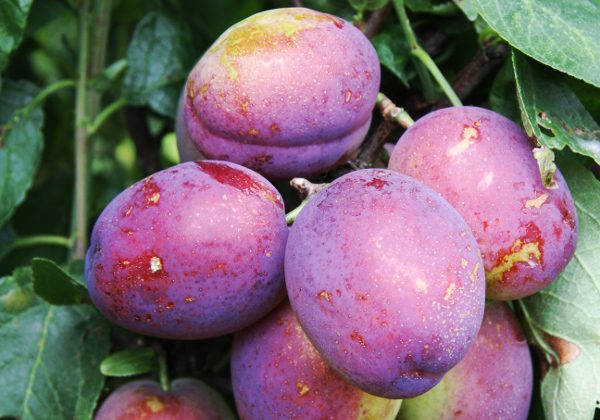
Plum ‘Jubilee’ produces superb quality big plums from mid-August with purple skin and juicy yellow flesh. It is strong growing, so it is recommended on a dwarf rootstock.
Mulberry ‘Chelsea’
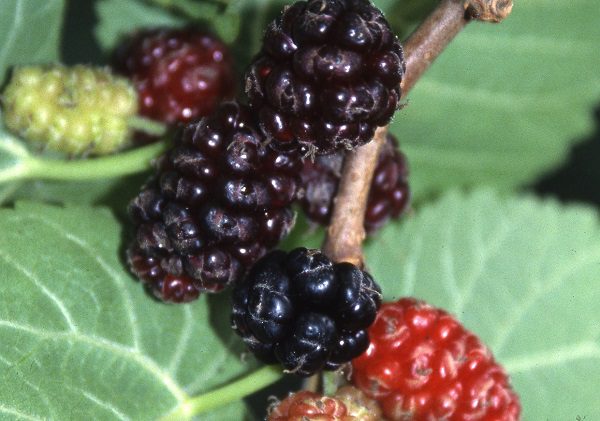
This mulberry variety produces succulent, dark red fruit that ripens throughout August. It can take a few years to crop, but the intense flavour is worth the wait! It also makes a very ornamental garden tree.
Fruit Tree Growing Guide
Planting
Planting a tree is easy and should only take a few minutes. Dig a hole about twice the size of the pot, place the tree in the hole so that the soil from the pot is level with the ground. Fill round with compost so there are no air pockets and water well. If you are planting in spring or summer remember to water the tree well and stake with support in the first few months to help it establish.
Pruning
Prune apples and pears in winter to create structure and if necessary give them a tidy up in June. Stone fruit such as plums, cherries and gages are best pruned just after fruiting.
It’s best to take all the fruit off in the first year before it develops as this allows the tree to focus its energy on growing. Thereafter you need only thin the fruit if there is a particularly heavy crop.
Pollination
If you live in an urban area then pollination will occur readily from nearby gardens. Bees travel many miles! In a more remote area choose self-fertile varieties or types that flower at the same time.
For more information and advice on which tree is best for your outdoor space and how to go about ordering contact us.




